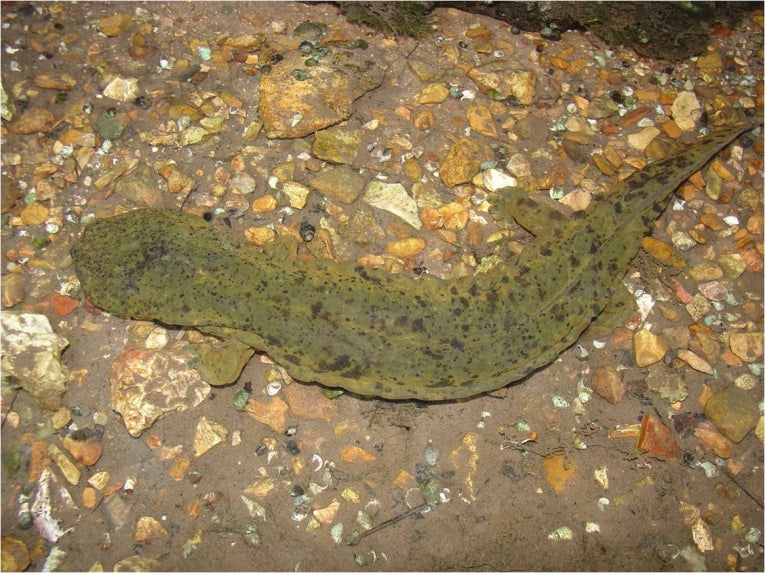The University of Florida has co-authored a new study on the endangered Ozark Hellbender giant salamander. This is the first study of its kind to analyse its skin microbes and the bacteria and fungi that effectively defend against pathogens.
The study aimed to observe and look deeper into the declining health and habitat of the salamander and can also be used as a measure of how our ecosystems are changing and affecting amphibians across the world.
The co-author, Max Nickerson, said, "Scientists and biologists view amphibians as kind of a 'canary in the coal mine' and their health is often used as a barometer for overall ecosystem health, including potential problems that may affect humans,"
The Ozark Hellbender is quite an impressive beast. It stands at more than 2 feet longer which makes it one of the largest salamanders in the USA. One thing of particular interest that the Ozark Hellbender boasts is a unique ability to regenerate injured or even missing body parts.
The lead author, Cheryl Nickerson managed to identify microorganisms from abnormal and injured tissue on the Ozark Hellbender. It is thought that pathogens may now be causing the lack of regeneration which is also seeing a notable decline in the population.
The team did manage to find a number of pathogens which could be potentially dangerous to the species. Aeromonas and hydrophila were both found and are believed to cause disease and even death in fish and amphibians.
Although a number of different pathogens were found in the injured tissue it was impossible to single any one of them out as the sole cause of the lack of regeneration. It is believed that there could be a whole host of other contributing factors which would include the loss of their natural habitat. One thing that became clear during the study is that more research was going to be needed and Nickerson put it very simply, "If you don't understand an amphibian's skin you don't understand the amphibians."
The knowledge of salamander regeneration has been around for a couple of centuries now but it wasn't until the 1980's when researchers and scientists started to notice a rapid decline in the Ozark Hellbender population as well as their lack of ability to regenerate, "We were finding animals with no legs that were still alive with flesh wounds or bones sticking out of limbs," Nickerson said, "Looking at the microorganisms on their skin can help us understand why these animals aren't regenerating at the rate we're used to seeing, and may lead to conclusions about population declines."
Unfortunately, the Ozark Hellbender has now made it on to the federal endangered species list. Stanley Trauth is the curator of amphibians and reptiles in the department of biological sciences at Arkansas State University, he said, "There has been a dramatic decrease in the population and there are a number of factors that contribute to that, but these types of studies will help provide more consistent results on the impact of microorganisms and animal health."
Trauth continued, "In the last 20 years we have been finding a tremendous number of injuries on these animals and those injuries are not healing," Nickerson said. "Now the population is down to almost nothing and we are very worried about the species and the environmental changes around them."
The Ozark Hellbender's fossil record dates back by an amazing 161 million years, "This is about as far, in phylogeny, as that type of regeneration goes, this is the most ancient group of salamanders that we know of," Nickerson said. "They have been through a lot and we want to find out what these changes mean."
"The animals in the river systems in that area, just like in Florida, where we have these huge amounts of spring water you have to worry about it," Nickerson said. "That's a big dome of fresh water and it has implications on human health as well."
The studies will continue.










